
The Nymphaeales are an order of flowering plants, consisting of three families of aquatic plants, the Hydatellaceae, the Cabombaceae, and the Nymphaeaceae. It is one of the three orders of basal angiosperms, an early-diverging grade of flowering plants. At least 10 morphological characters unite the Nymphaeales. One of the traits is the absence of a vascular cambium, which is required to produce both xylem (wood) and phloem, which therefore are missing. Molecular synapomorphies are also known.

Nymphaeaceae is a family of flowering plants, commonly called water lilies. They live as rhizomatous aquatic herbs in temperate and tropical climates around the world. The family contains five genera with about 70 known species. Water lilies are rooted in soil in bodies of water, with leaves and flowers floating on or emergent from the surface. Leaves are round, with a radial notch in Nymphaea and Nuphar, but fully circular in Victoria and Euryale.
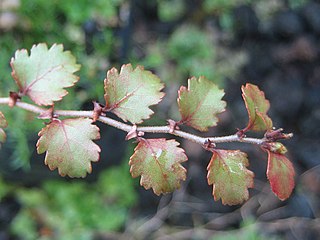
Antarctic flora are a distinct community of vascular plants which evolved millions of years ago on the supercontinent of Gondwana. Presently, species of Antarctica flora reside on several now separated areas of the Southern Hemisphere, including southern South America, southernmost Africa, New Zealand, Australia, and New Caledonia. Joseph Dalton Hooker was the first to notice similarities in the flora and speculated that Antarctica had served as either a source or a transitional point, and that land masses now separated might formerly have been adjacent.

The South Polar region of the Cretaceous comprised the continent of East Gondwana–modern day Australia, Zealandia, and Antarctica–a product of the break-up of Gondwana in the Cretaceous Period. The southern region, during this time, was much warmer than it is today, ranging from perhaps 4–8 °C (39–46 °F) in the latest Cretaceous Maastrichtian in what is now southeastern Australia. This prevented permanent ice sheets from developing and fostered polar forests, which were largely dominated by conifers, cycads, and ferns, and relied on a temperate climate and heavy rainfall. Major fossil-bearing geological formations that record this area are: the Santa Marta and Sobral Formations of Seymour Island off the Antarctic Peninsula; the Snow Hill Island, Lopez de Bertodano, and the Hidden Lake Formations on James Ross Island also off the Antarctic Peninsula; and the Eumeralla and Wonthaggi Formations in Australia.
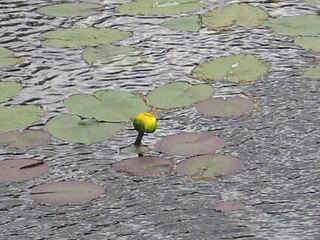
Nuphar is a genus of aquatic plants in the family Nymphaeaceae, with a temperate to subarctic Northern Hemisphere distribution. Common names include water-lily, pond-lily, alligator-bonnet or bonnet lily, and spatterdock.

Nuphar lutea, the yellow water-lily, brandy-bottle, or spadderdock, is an aquatic plant of the family Nymphaeaceae, native to northern temperate and some subtropical regions of Europe, northwest Africa, and western Asia. This species was used as a food source and in medicinal practices from prehistoric times with potential research and medical applications going forward.
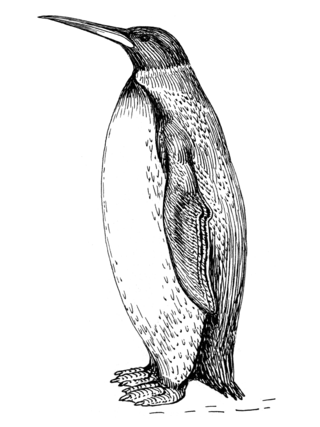
Palaeeudyptes klekowskii, is an extinct species of the penguin genus Palaeeudyptes. It was until recently thought to have been approximately the size of its congener Palaeeudyptes antarcticus, which would mean it was somewhat larger than the modern emperor penguin, but a new study shows it was in fact almost twice as tall, earning it the nickname “Mega Penguin”. Its maximum height is estimated to be up to 2 meters (6.6 ft) and maximum body mass up to 116 kg (256 lb). Knowledge of it comes from an extensive collection of fossil bones from the Late Eocene of the La Meseta Formation on Seymour Island, Antarctica. P. klekowskii was at first not recognized as a distinct species, and despite the coexistence of two so closely related species of similar size as Palaeeudyptes gunnari and P. klekowskii seeming somewhat improbable, the amount of fossil material suggests that the two species are indeed diagnosably different.

Seymour Island or Marambio Island, is an island in the chain of 16 major islands around the tip of the Graham Land on the Antarctic Peninsula. Graham Land is the closest part of Antarctica to South America. It lies within the section of the island chain that resides off the west side of the peninsula's northernmost tip. Within that section, it is separated from Snow Hill Island by Picnic Passage, and sits just east of the larger key, James Ross Island, and its smaller, neighboring island, Vega Island.

Hyloidea is a superfamily of frogs. Hyloidea accounts for 54% of all living anuran species. The superfamily Hyloidea branched off from its closest relative, the Australobatrachia, during the mid-Cretaceous. The fossil evidence found during the Cretaceous-Paleogene extinction event could not determine the effects upon the frogs, due to the lack of fossils. Increased forestation erupted after this extinction, possibly leading to more arboreal adaptations of these anurans to be best suited for this habitat.
Antarctodon is an extinct genus of mammals from the Early Eocene. It is a basal astrapotherian which lived in what is now Seymour Island, Antarctic Peninsula, at that moment still connected to South America where most of the astrapotherians were found. The holotype and only specimen MLP 08-XI-30-1, an isolated right p4 or m1, was found in the Telm 5 Member of the La Meseta Formation in West Antarctica. It was first named by Mariano Bond, Alejandro Kramarz, Ross D. E. MacPhee and Marcelo Reguero in 2011 and the type species is Antarctodon sobrali.

The La Meseta Formation is a sedimentary sequence deposited during the Eocene on Seymour Island off the coast of the Antarctic Peninsula. It is noted for its fossils, which include both marine organisms and the only terrestrial vertebrate fossils from the Cenozoic of Antarctica.

Llanocetus is a genus of extinct toothed baleen whales from the Late Eocene of Antarctica. The type species, Llanocetus denticrenatus, reached gigantic proportions, with the juvenile specimen reaching an estimated 8 m (26 ft) in length; a second, unnamed species, known only from three isolated premolar teeth, reached an estimated total body length of up to 12 m (39 ft). Like other contemporary baleen whales of the Eocene, Llanocetus completely lacked baleen in its jaws. It was probably a suction feeder like the modern beaked and pygmy right whales.
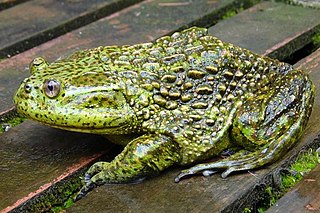
The Calyptocephalellidae are a family of toads found in Chile containing two living genera, Calyptocephalella and Telmatobufo.

Nuphar carlquistii is an extinct species of flowering plant in the family Nymphaeaceae related to the modern spatterdock, Nuphar advena. The species is known from fossil seeds and fruits found in the early Eocene Okanagan Highlands deposits of northern Washington state and British Columbia, Canada.
Cocatherium is an extinct genus of marsupial mammals of uncertain family placement, from the earliest Paleocene of South America, predating the Tiupampan South American land mammal age. The genus was described based on a fossil molar that was found in the Danian part of the Cretaceous-Paleogene Lefipán Formation in the Cañadón Asfalto Basin in north-central Patagonia, Argentina. The type species of the genus is C. lefipanum.
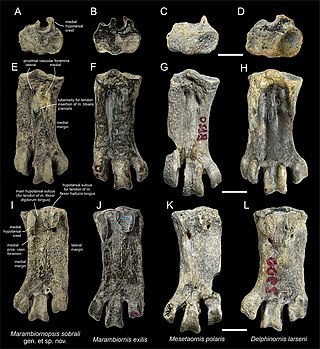
Marambiornopsis is an extinct genus of Eocene penguin known from the Submeseta Formation in Antarctica. It contains one species, M. sobrali.
Notiolofos is an extinct genus of sparnotheriodontid ungulate from the order Litopterna. The animal lived during the Eocene, in modern-day Antarctica. The genus contains two species, N. arquinotiensis, the type species, and N. regueroi.
Sparnotheriodontidae is an enigmatic extinct family of litopterns known primarily from teeth. Sparnotheriodontids are one of two South American native ungulate clades known to have reached Antarctica, the other being astrapotheres.

Myobatrachoidea is a superfamily of frogs. It contains two families, both of which are found in Australia, New Guinea, and the Aru Islands. Some sources group these two families into a single family Myobatrachidae.
Antarcticeras is an extinct genus of enigmatic cephalopod from the Eocene of Antarctica. It contains a single species, A.nordenskjoeldi. It is either considered the last of the "orthocone"-type cephalopods, the only member of its subclass Paracoleoidea & a descendant of the orthoceratids, and a remarkable example of convergent evolution with coleoid cephalopods, or an oegospid squid and a transitional form in the development of the modern squid gladius, of which it is the only preserved example.














